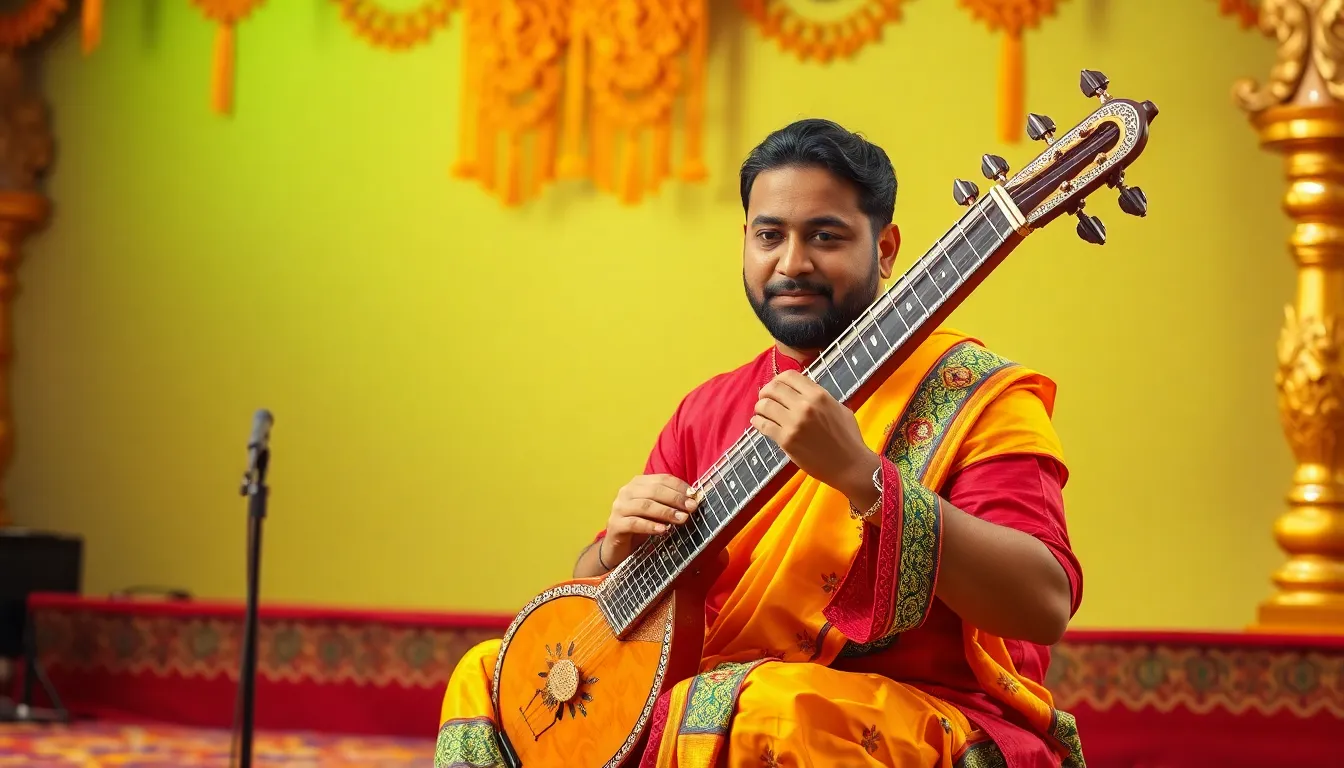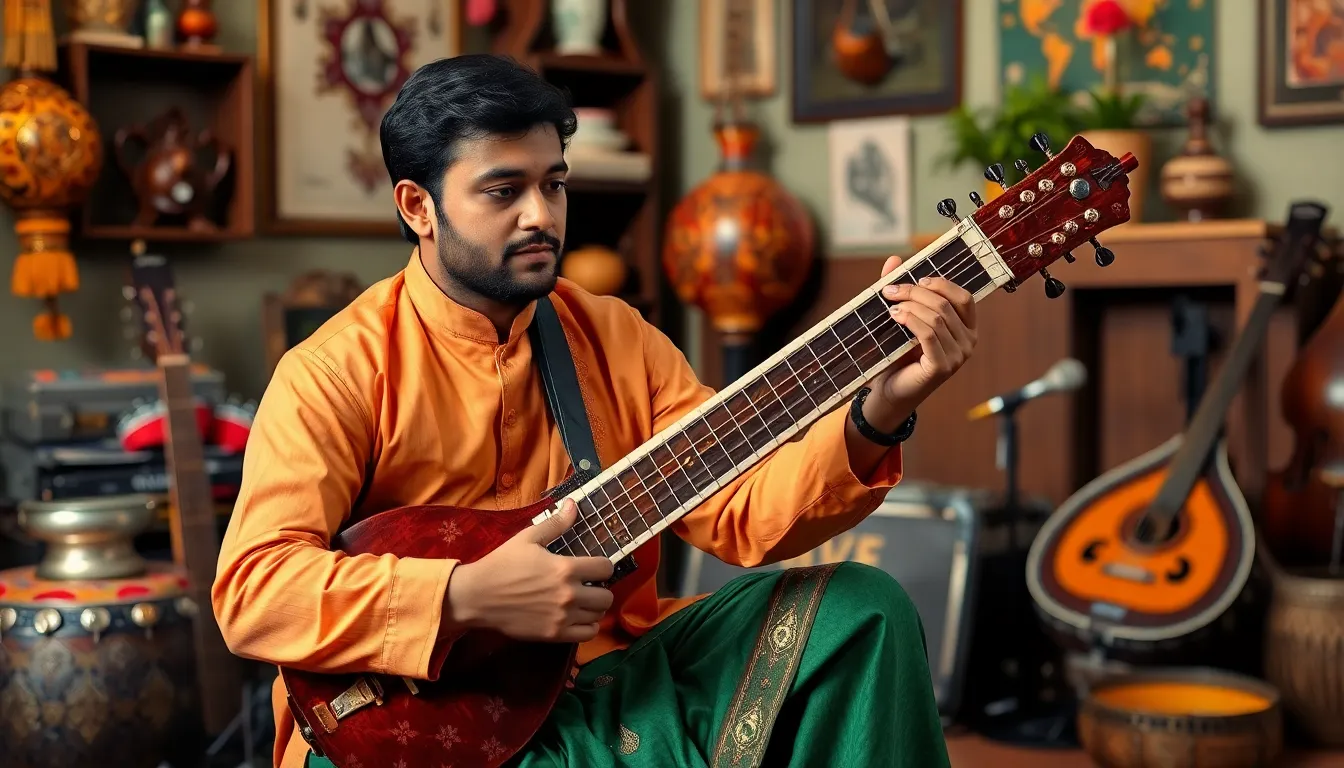In the vibrant tapestry of Indian classical music, nishidhasagamam stands out like a quirky yet charming character in a beloved novel. This fascinating concept, rooted in the intricate world of ragas, adds a unique twist to musical expression, making it a must-know for any aspiring musician or curious listener. Imagine a musical journey where the rules bend and sway, allowing creativity to flourish like a wildflower in a well-manicured garden.
Table of Contents
ToggleOverview of Nishidhasagamam
Nishidhasagamam stands as a crucial aspect of Indian classical music, primarily influencing the performance of ragas. This concept encourages musicians to explore restricted notes or phrases, adding depth and nuance to their compositions. Creativity thrives through its application, as artists manipulate these variations to express complex emotions. Many musicians leverage nishidhasagamam to create a unique sound palette, enhancing their individual style.
Musical practitioners often connect flexibility with nishidhasagamam, allowing improvisation within defined constraints. Distinctive melodic patterns emerge from this practice, inviting listeners into a captivating sonic experience. Each raga gains richness when artists thoughtfully incorporate this aspect, showcasing the diversity of Indian music.
Understanding nishidhasagamam promotes appreciation of ragas among aspiring musicians and audiences alike. Both performers and listeners benefit from grasping how this concept shapes musical dialogues. It cultivates an environment where innovation flourishes, encouraging musicians to push boundaries.
Significantly, nishidhasagamam contributes to emotional expression in performances. By manipulating notes, it evokes a range of feelings, enhancing the overall experience. Musicians can convey subtle nuances that resonate deeply with audiences, underlining the importance of this practice.
Ultimately, nishidhasagamam exemplifies the creative potential within Indian classical music. Every interaction with this concept invites discovery, enriching the art form. Engaging with nishidhasagamam allows for a deeper understanding of the intricate relationship between melody and emotion, reinforcing its vital role in musical expression.
Historical Significance

Nishidhasagamam holds substantial historical importance within Indian classical music. Its roots trace back to ancient texts, influencing the evolution of musical forms and practices.
Origins and Development
The origin of nishidhasagamam dates to ancient musical treatises. Scholars attribute its development to the theories outlined in texts such as Natya Shastra and Sangita Ratnakara. These documents laid the groundwork for how musicians engage with restricted notes. Over time, nishidhasagamam evolved, becoming an integral part of various musical styles, enriching the practices of both vocalists and instrumentalists.
Key Figures in Nishidhasagamam
Several key figures contributed to the understanding of nishidhasagamam. Renowned musicians like Tansen and Thinakarar played pivotal roles in its dissemination. They explored innovative ways to incorporate restricted notes into their performances. Scholars also highlighted contributions from modern musicians who continue to push boundaries, integrating nishidhasagamam into contemporary compositions. Each of these figures influenced the ongoing dialogue surrounding this unique aspect of Indian classical music.
Cultural Impact
Nishidhasagamam holds a profound place in the cultural landscape of Indian classical music. Its influence stretches beyond music, permeating literature and visual art forms.
Influence on Literature and Art
Nishidhasagamam has inspired a wealth of literary works, with poets and writers incorporating its themes into their narratives. Characters often embody the emotional depth that this concept cultivates in musical expression. Artworks reflect the intricate patterns and vibrant emotions associated with these musical explorations, capturing the essence of improvisation and creativity. Each piece serves as a testament to how music can intertwine with storytelling and visual artistry, inviting deeper engagement from audiences. The blending of these elements enhances cultural richness, enabling a cross-pollination of ideas that elevates both disciplines.
Modern Adaptations
Contemporary musicians embrace nishidhasagamam, integrating it into modern compositions and fusion genres. Innovative artists experiment with the concept, creating new soundscapes that resonate with diverse audiences. Various genres, including film music and world music, showcase how nishidhasagamam shapes new interpretations while honoring traditional roots. Performers draw upon this concept to explore emotional narratives in their work, facilitating connections between classical frameworks and modern expressions. The ongoing adaptations affirm the relevance of nishidhasagamam in today’s musical discourse, encouraging artists to push boundaries and reimagine possibilities.
Key Concepts and Themes
Nishidhasagamam plays a crucial role in Indian classical music, enriching the emotional landscape of compositions and performances. This section delves into its fundamental aspects and meanings.
Major Tenets of Nishidhasagamam
Central to nishidhasagamam is the exploration of restricted notes, which musicians use to create unique expressions. This concept allows for deliberate limitations, fostering creativity within specific boundaries. Artists utilize these constraints to develop complex melodic patterns that surprise and engage listeners. Diverse raga performances benefit from these nuances, inviting musicians to experiment with rhythms and dynamics. Major tenets focus on balancing freedom with discipline, encouraging musicians to redefine norms while staying rooted in tradition.
Symbolism and Interpretation
Symbolically, nishidhasagamam represents the intricate relationship between melody and emotion. Each variation conveys depths of feeling, allowing musicians to express a spectrum of sentiments. Musicians interpret these variations depending on context, culture, and personal experiences, which adds layers to the performance. This concept resonates with audiences by evoking shared emotions and experiences, making musical moments more relatable. Interpretation of nishidhasagamam extends beyond music, influencing literature and visual arts, as artists blend themes to reflect their rich emotional landscapes.
Nishidhasagamam stands as a testament to the depth and versatility of Indian classical music. Its ability to weave intricate emotional narratives through restricted notes enriches both performance and composition. Musicians who embrace this concept not only enhance their artistry but also contribute to a vibrant cultural dialogue that extends into literature and visual arts.
As contemporary artists continue to explore and innovate within this framework, nishidhasagamam remains a vital force in shaping the future of music. This enduring legacy invites both performers and audiences to engage with the profound emotional landscapes that define the art form, ensuring that the journey of musical exploration is as captivating as the melodies themselves.



